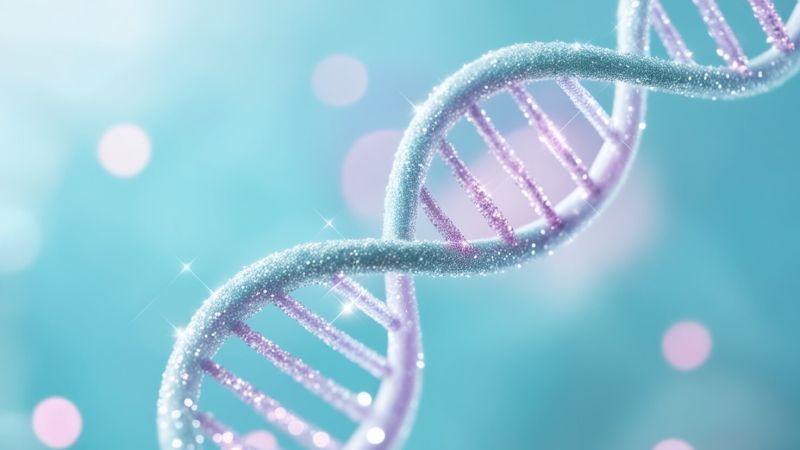
Understanding Senescence: The Science of Aging and Cellular Degeneration
Senescence, the natural aging process, is a complex phenomenon affecting all living organisms. Cells and tissues undergo degenerative changes when the body ages, leading to decreased physiological function. To comprehend the mechanisms behind senescence, it is crucial to delve into the biological basis of aging and understand the intricate processes contributing to cellular degeneration.
The Biological Basis of Aging
The Role of DNA in Aging
One of the key factors contributing to cellular aging is the gradual accumulation of DNA damage. Over time, exposure to environmental factors such as radiation and toxins can cause mutations in the DNA sequence. These mutations disrupt normal cellular processes and lead to the deterioration of various tissues and organs.
When looking deeper into the role of DNA in aging. DNA, or deoxyribonucleic acid, is the genetic material that carries the instructions for the development and functioning of all living organisms. It is composed of nucleotides, which are the building blocks of DNA. These nucleotides consist of a sugar molecule, a phosphate group, and one of four nitrogenous bases: adenine (A), thymine (T), cytosine (C), and guanine (G).
When DNA is damaged, it can lead to a variety of consequences. For example, a mutation in a specific gene may produce a faulty protein, which can disrupt normal cellular processes. DNA damage can also lead to chromosomal abnormalities, such as deletions, insertions, or translocations, which can profoundly affect cell function.
It is worth noting that the human body has evolved various mechanisms to repair DNA damage. These repair mechanisms, such as base excision repair and nucleotide excision repair, help maintain the integrity of the genome. However, during aging1, the efficiency of these repair processes tends to decline, leading to an accumulation of DNA damage.
Cellular Degeneration: An Inevitable Process?
Scientists have long debated whether cellular degeneration is an inevitable consequence of aging or if it can be delayed or prevented. It is now believed that while certain aspects of senescence are inevitable, lifestyle factors and genetic predisposition can influence the rate at which degenerative changes occur.
Senescence refers to cellular function’s gradual deterioration and replicative capacity loss. It is a complex process involving various molecular and cellular changes. One of the hallmarks of senescence is the shortening of telomeres, which are protective caps at the ends of chromosomes. Telomeres naturally shorten with each cell division, eventually reaching a critical length that triggers cellular senescence.
However, lifestyle factors such as diet, exercise, and stress management can impact the rate of telomere shortening. For example, a healthy diet rich in antioxidants and nutrients can help protect telomeres from oxidative damage. Regular physical activity has also been shown to positively affect telomere length, potentially slowing down the aging process.
Furthermore, genetic factors play a role in determining an individual’s susceptibility to cellular degeneration. Certain genetic variations can affect the efficiency of DNA repair mechanisms or the stability of telomeres, making some individuals more prone to age-related cellular damage.
By understanding the stages of cellular aging and the impact of senescence on organ function, scientists and researchers can explore potential strategies to slow down the aging process. This knowledge can pave the way for developing interventions and therapies to promote healthy aging and extend the lifespan.
The Process of Senescence
The process of senescence, or cellular aging, is a complex phenomenon that involves various stages and impacts the overall function of organs and systems within the body. Understanding the different stages of cellular aging and its effects on organ function is crucial in comprehending the aging process.
The Stages of Cellular Aging
Cellular aging can be broadly categorized into three stages: replicative, chronological, and stress-induced senescence. Each stage represents a different mechanism through which cells undergo aging.
Replicative senescence occurs when cells reach their maximum replicative capacity and can no longer divide. This stage is characterized by the shortening of telomeres, and protective caps at the ends of chromosomes. As telomeres progressively shorten with each cell division, they eventually reach a critical length, triggering replicative senescence. This phenomenon is often referred to as the “Hayflick limit,” named after Leonard Hayflick, who first observed this phenomenon in human cells.
Chronological senescence, on the other hand, is the result of the accumulation of damage over time. As cells are exposed to various environmental factors and undergo metabolic processes, they accumulate DNA damage, protein misfolding, and other forms of cellular damage. Over time, this damage exceeds the cell’s repair capacity, leading to a decline in cellular function and ultimately contributing to aging.
Lastly, various stressors, such as oxidative stress or DNA damage, trigger stress-induced senescence. When cells are exposed to excessive levels of reactive oxygen species (ROS) or encounter DNA damage, they activate specific signaling pathways that induce senescence. This stress response aims to prevent the proliferation of damaged cells and maintain tissue integrity. However, chronic exposure to stressors can lead to an accumulation of senescent cells, which can harm organ function.
The Impact of Senescence on Organ Function
Senescence not only affects individual cells but also profoundly impacts the function of organs and systems within the body. The aging process can significantly impair the function of various organs, leading to an increased risk of age-related diseases.
For example, aging can significantly impair cardiovascular function, leading to an increased risk of heart disease and hypertension. As the heart ages, it undergoes structural and functional changes, such as the thickening of the heart muscle and decreased elasticity of blood vessels.
These changes can result in reduced cardiac output, impaired blood flow, and an increased workload on the heart, ultimately contributing to the development of cardiovascular diseases.
Similarly, the nervous system can undergo age-related changes, resulting in cognitive decline and an increased susceptibility to neurological disorders. As individuals age, they may experience a decline in memory, attention, and cognitive processing speed.
These changes are attributed to various factors, including the accumulation of cellular damage, reduced neuroplasticity, and alterations in neurotransmitter systems. Age-related neurodegenerative disorders, such as Alzheimer’s disease and Parkinson’s disease, are also associated with the progressive loss of neuronal function and the accumulation of senescent cells in the brain.
In addition to cardiovascular and neurological effects, senescence can also impact other organ systems. The musculoskeletal system undergoes age-related changes, including the loss of muscle mass and strength, decreased bone density, and impaired joint function. The immune system also undergoes alterations with age, leading to a decline in immune function and an increased susceptibility to infections and autoimmune diseases.
Overall, senescence is a complex process involving multiple stages of cellular aging and profoundly impacts organ function. Understanding the mechanisms and consequences of senescence is crucial in developing strategies to promote healthy aging and prevent age-related diseases.
Theories of Aging and Senescence
As our understanding of the complex aging process continues to evolve, several theories have emerged to explain why and how our bodies age. These theories provide valuable insights into the mechanisms underlying the gradual deterioration of cells and tissues over time. Two prominent theories, the Free Radical Theory, and the Telomere Theory, shed light on different aspects of the aging process.
The Free Radical Theory
The Free Radical Theory2 proposes that the accumulation of oxidative damage primarily causes aging. Free radicals, unstable molecules that result from normal metabolic processes, can cause significant damage to cellular structures such as proteins, lipids, and DNA. These highly reactive molecules can potentially disrupt the delicate balance within cells, leading to the gradual deterioration of tissues and organs.
When free radicals interact with cellular components, they can initiate a chain reaction of damage, impairing the normal functioning of cells. This theory suggests that an imbalance between free radicals and antioxidant defenses, which neutralize these harmful molecules, leads to the accumulation of oxidative damage over time. As the body’s antioxidant defenses become less effective with age, the damage caused by free radicals becomes more pronounced, contributing to aging.
While the Free Radical Theory provides valuable insights into the role of oxidative stress in aging, it is important to note that other factors, such as genetic predisposition and environmental influences, also play significant roles in the complex process of aging.
The Telomere Theory
Another prominent theory of aging is the Telomere Theory, which focuses on the role of telomeres in determining the lifespan of cells. Telomeres are protective caps at the ends of chromosomes that shorten with each cell division. These repetitive DNA sequences act as a buffer, preventing the loss of essential genetic material during replication.
According to the Telomere Theory, as cells divide, their telomeres gradually shorten. Once telomeres reach a critically short length, cells enter a state of replicative senescence, where they can no longer divide and function properly. This theory suggests that telomere shortening acts as a clock, determining the lifespan of cells and contributing to overall aging.
While telomere shortening is a natural and inevitable process, it can be influenced by various factors, including lifestyle choices and environmental factors. Chronic stress, poor nutrition, and exposure to harmful substances can accelerate telomere shortening, leading to premature aging.
Understanding the mechanisms underlying telomere shortening and its impact on aging is a topic of ongoing research. Scientists are exploring potential interventions, such as telomerase activation, to prevent or reverse telomere shortening and potentially slow down the aging process.
It is important to note that the Free Radical Theory and the Telomere Theory are not mutually exclusive. In fact, these theories complement each other, providing a more comprehensive understanding of the complex process of aging. Further research is needed to unravel the intricate interplay between these theories and uncover additional factors contributing to the aging process.
The Physiological Effects of Aging
Aging and the Cardiovascular System
Structural and functional changes in the heart and blood vessels characterize cardiovascular aging. When aging, blood vessels become stiffer and less elastic, leading to increased blood pressure and reduced circulation. Additionally, age-related changes in the heart can result in impaired cardiac function and an increased risk of heart disease.
Aging and the Nervous System
The nervous system is also profoundly affected by aging. Neurons gradually decline in number and undergo structural changes, affecting cognitive function and memory. Age-related neurodegenerative diseases, such as Alzheimer’s and Parkinson’s, can further exacerbate these changes and lead to severe impairments in motor and cognitive abilities.
The Molecular Mechanisms of Senescence
Autophagy and Senescence
Autophagy, the process by which cells recycle damaged or dysfunctional components, plays a critical role in senescence. Impaired autophagy can lead to the accumulation of toxic cellular waste and accelerate the aging process. Understanding the molecular mechanisms that regulate autophagy may offer insights into potential therapeutic strategies to counteract senescence.
Senescence-Associated Secretory Phenotype (SASP)
SASP refers to senescent cells’ production and release of various molecules, including pro-inflammatory cytokines, growth factors, and matrix metalloproteinases. SASP can have both beneficial and detrimental effects. While it helps eliminate damaged cells and promote tissue repair, chronic SASP activation can contribute to age-related chronic inflammation and tissue dysfunction.
Conclusion
Senescence, the natural aging process, and cellular degeneration, is a complex phenomenon involving various biological, molecular, and physiological changes. By unraveling the mechanisms behind senescence, scientists can gain valuable insights into potential interventions to slow the aging process and improve health outcomes. With further research, scientists may be able to unlock the secrets of a longer and healthier lifespan. Take the AgingSOS® test by Jinfiniti Precision Medicine, Inc. to assess your level of cellular health.
Lastly, if you’re interested in going deeper on health-related content, here are a few of our recent posts that you may want to read:
- 9 Powerful Benefits of Optimizing Your NAD
- Andrew Huberman is Wrong About NAD, NAD+ precursor & Longevity
- What Does Peak Performance Look Like?
- Why Optimized, Precision Medicine is the Future
Referenced Sources:
Read More














